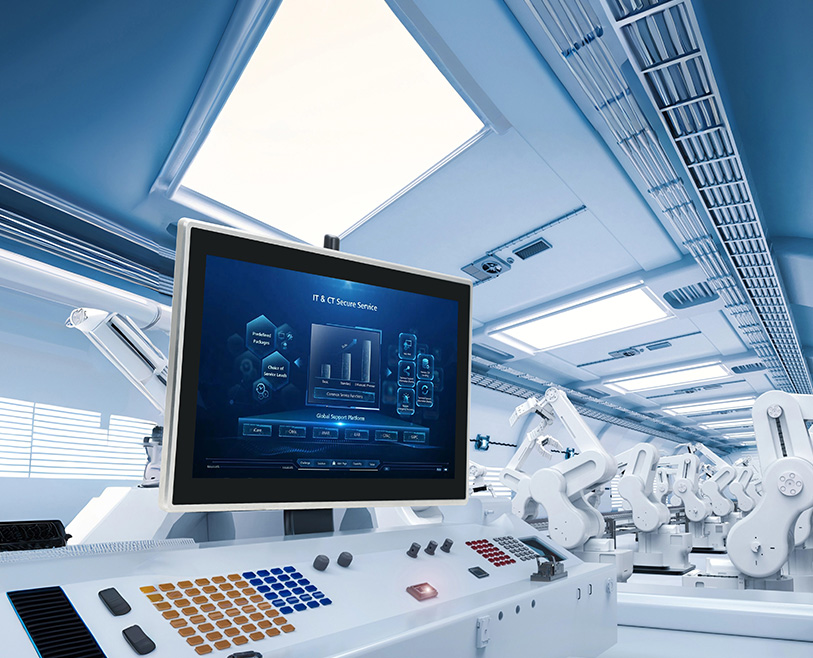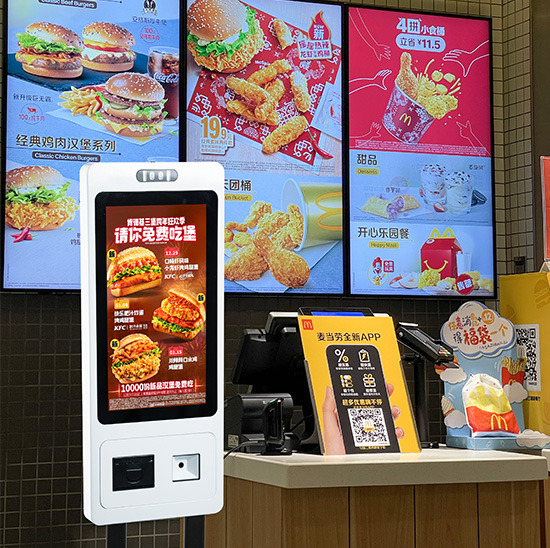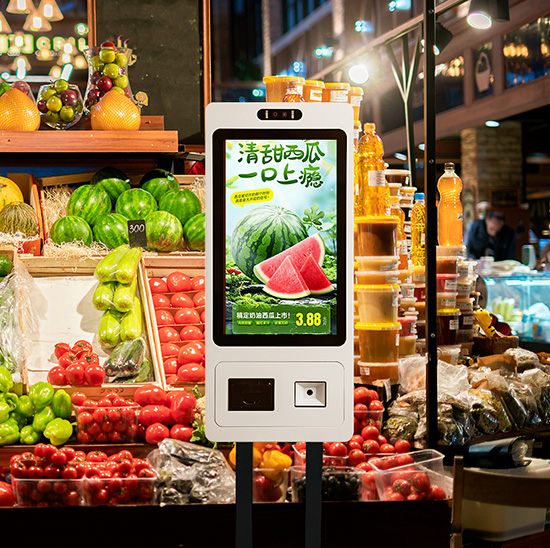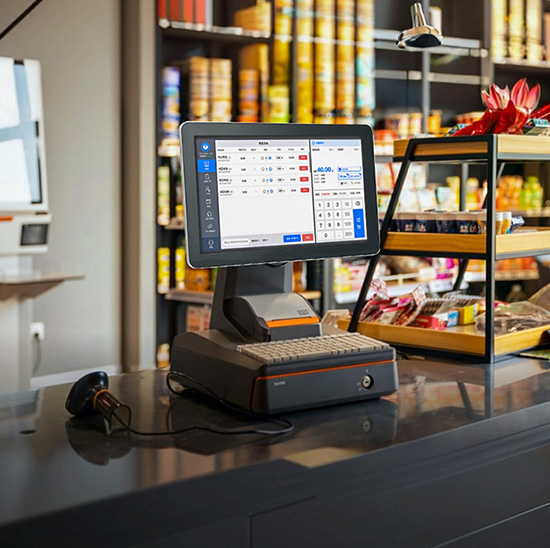في المشهد المتطور للرعاية القلبية المحمولة - حيثما تكون سريعة, مخطط كهربية القلب الدقيق (تخطيط كهربية القلب) تعد المراقبة أمرًا بالغ الأهمية للتشخيص المبكر وإدارة المرضى، حيث أصبحت شاشة اللمس لجهاز تخطيط القلب (ECG) مكونًا محددًا للأجهزة المحمولة من الجيل التالي. على عكس ضخمة, واجهات جامدة تؤثر على قابلية النقل, توازن حلول اللمس خفيفة الوزن هذه بين الوظائف السريرية والتصميم المريح, تمكين التشغيل السلس لمقدمي الرعاية الصحية في الإعدادات الميدانية, عيادات, أو بيوت المرضى. سواء تم دمجها في شاشات تخطيط القلب المحمولة, أجهزة القلب القابلة للارتداء, أو أدوات اختبار نقطة الرعاية, توفر شاشة اللمس لجهاز تخطيط القلب تفاعلًا سريع الاستجابة, عرض بيانات واضح, والأداء الموثوق — كل ذلك ضروري للتسليم في الوقت المناسب, رعاية القلب المنقذة للحياة. تستكشف هذه المقالة ميزاته الأساسية, تطبيقات العالم الحقيقي, والفوائد الرئيسية, مساعدة الشركات المصنعة للأجهزة الطبية ومقدمي الرعاية الصحية على اختيار حلول شاشات اللمس التي تتوافق مع متطلبات تخطيط القلب المحمول.

الميزات الأساسية لشاشة اللمس خفيفة الوزن لجهاز تخطيط القلب
1. خفيفة الوزن للغاية, تصميم مدمج
الميزة المميزة لشاشات اللمس الخاصة بجهاز تخطيط القلب هي بنيتها خفيفة الوزن, تم تصميمه خصيصًا لأجهزة تخطيط القلب المحمولة. الاستفادة من المواد المتقدمة مثل الترانزستور ذو الأغشية الرقيقة (تفت) يعرض وركائز زجاجية خفيفة الوزن, تزن شاشات اللمس هذه ما بين 30 إلى 50 جرامًا، أي ما يصل إلى 30 جرامًا 40% أخف من واجهات اللمس الصناعية القياسية. ملفاتهم الشخصية النحيلة (عادة ما يكون سمكها 2-5 ملم) تمكين التكامل في الأجهزة المحمولة دون إضافة كميات كبيرة, ضمان إمكانية النقل لمقدمي الرعاية الصحية الذين يحتاجون إلى حمل المعدات بين المرضى أو عبر الإعدادات الميدانية. كما يدعم عامل الشكل المدمج تصميم الجهاز المريح, تقليل تعب اليد أثناء الاستخدام لفترات طويلة.
2. الاستجابة السريرية & عملية بديهية
تتطلب مراقبة تخطيط القلب المحمولة سرعة كبيرة, تفاعل دقيق - حتى في سيناريوهات الضغط العالي - وتوفر شاشة اللمس لجهاز تخطيط القلب أداءً على المستوى السريري:
زمن استجابة منخفض للمس (≥5 مللي ثانية) يضمن الاستجابة الفورية للصنابير, الضربات الشديدة, والإيماءات قرصة, السماح لمقدمي الخدمات بالتنقل بسرعة في القوائم, ضبط الإعدادات, أو التقاط قراءات تخطيط القلب دون تأخير.
التوافق مع القفازات يلائم العاملين في مجال الرعاية الصحية الذين يرتدون قفازات الاختبار, مما يلغي الحاجة إلى إزالة معدات الوقاية الشخصية في منتصف الإجراء.
مبسط, واجهات قائمة على الأيقونات ذات حجم كبير, تعمل الأزرار عالية التباين على تقليل الحمل المعرفي, تمكين الوصول السريع إلى الوظائف الهامة (على سبيل المثال, بدء/إيقاف التسجيل, مراجعة البيانات, إدارة ملف المريض).
3. شاشات عرض عالية الوضوح لتصور واضح للبيانات
يعتمد التفسير الدقيق لتخطيط القلب على الوضوح, أشكال موجية قابلة للقراءة - وتعطي شاشات اللمس لجهاز تخطيط القلب الأولوية للرؤية:
عالية الدقة (720ع+ للشاشات الصغيرة) يعرض تقديم الأشكال الموجية لتخطيط القلب, مقاييس معدل ضربات القلب, وبيانات المرضى بوضوح استثنائي, دعم التحليل الدقيق لإيقاعات القلب.
سطوع عالية (400+ نوت) تضمن اللوحات ذات الطلاء المضاد للوهج إمكانية القراءة في بيئات متنوعة, من ممرات المستشفى المشرقة إلى غرف المرضى المعتمة أو الأماكن الميدانية الخارجية.
إضاءة خلفية قابلة للتعديل وتراكبات بيانات مرمزة بالألوان (على سبيل المثال, الأحمر لمعدلات ضربات القلب غير الطبيعية, الأخضر للعادي) تعزيز التمايز الموجي وتسريع تفسير النتائج.
4. متانة & المرونة البيئية
تواجه الأجهزة المحمولة التعامل المتكرر, ينقل, والتعرض لظروف متغيرة - وقد تم تصميم شاشة اللمس لجهاز تخطيط القلب لتحمل هذه التحديات:
زجاج مقسى مقاوم للصدمات يحمي من السقوط العرضي (ما يصل إلى 1.5 متر على الأسطح الصلبة) والآثار, ضمان الموثوقية في إعدادات الهاتف المحمول.
حماية IP54+ من الدخول ضد الغبار, رُطُوبَة, والانسكابات الطفيفة, مما يجعلها مناسبة للبيئات السريرية والاستخدام الميداني.
نطاق درجة حرارة التشغيل واسعة (-10درجة مئوية إلى 55 درجة مئوية / 14درجة فهرنهايت إلى 131 درجة فهرنهايت) يستوعب الاستخدام في المناخات القاسية, من العيادات الخارجية البعيدة إلى مرافق التخزين البارد.
5. استهلاك منخفض للطاقة لإطالة عمر البطارية
تعتمد إمكانية النقل على عمر البطارية الطويل، كما تعمل شاشات اللمس لجهاز تخطيط القلب على تقليل استهلاك الطاقة:
تقنيات العرض الموفرة للطاقة (على سبيل المثال, IPS-LCD, OLED) تقليل استهلاك الطاقة بنسبة 20-30% مقارنة بشاشات اللمس القياسية, تمديد وقت تشغيل الجهاز إلى 8+ ساعات بتهمة واحدة.
يعمل تعديل السطوع التلقائي وأوضاع النوم على الحفاظ على البطارية, ضمان بقاء الجهاز قيد التشغيل أثناء المناوبات الطويلة أو عمليات النشر الميدانية الممتدة.
التطبيقات الرئيسية لشاشة اللمس لجهاز تخطيط القلب
1. شاشات تخطيط القلب المحمولة باليد
التطبيق الأكثر شيوعًا لشاشة اللمس لجهاز ECG هو الشاشات المحمولة المستخدمة في:
عيادات الرعاية الأولية لإجراء تقييمات سريعة للقلب أثناء زيارات المرضى.
خدمات طبية طارئة (إي إم إس) لالتقاط تخطيط القلب قبل المستشفى ونقله إلى المستشفيات.
الرعاية الصحية المنزلية للمراقبة عن بعد للمرضى الذين يعانون من أمراض القلب المزمنة (على سبيل المثال, رجفان أذيني, سكتة قلبية).
الطب الرياضي للفحص الميداني لصحة القلب لدى الرياضيين.
2. أجهزة تخطيط القلب القابلة للارتداء
أجهزة مراقبة القلب القابلة للارتداء (على سبيل المثال, بقع الصدر, الأجهزة التي يتم ارتداؤها على المعصم) الاستفادة من التصميم المدمج لشاشة اللمس الخاصة بجهاز تخطيط القلب (ECG).:
شاشات لمس صغيرة الحجم (1.5– 3 بوصات) تمكين تفاعل المستخدم (على سبيل المثال, بدء التسجيل اليدوي, عرض اتجاهات معدل ضربات القلب) دون المساس بالمظهر النحيف للجهاز القابل للارتداء.
تدعم المتغيرات المقاومة للماء المراقبة المستمرة أثناء الأنشطة اليومية, بما في ذلك الاستحمام أو ممارسة الرياضة.
3. اختبار نقطة الرعاية (نقطة الرعاية) الأجهزة
مدمج في أنظمة POCT المحمولة, تعمل شاشة اللمس لجهاز ECG على تبسيط سير العمل:
مراكز الرعاية العاجلة والعيادات الخارجية للفرز السريع لمرضى آلام الصدر.
المناطق النائية أو التي تعاني من نقص الخدمات حيث يكون الوصول إلى أجهزة تخطيط القلب الثابتة محدودًا.
إعدادات التطبيب عن بعد, السماح لمقدمي الخدمات بتوجيه المرضى من خلال اختبارات تخطيط القلب ذاتية الإدارة عبر واجهة اللمس.
فوائد شاشة اللمس لجهاز تخطيط القلب لمقدمي الرعاية الصحية & مرضى
1. تحسين الكفاءة السريرية & سرعة الرعاية
من خلال تبسيط العملية وتسريع الوصول إلى البيانات, تعمل شاشات اللمس لجهاز تخطيط القلب على تقليل الوقت من التقييم إلى التشخيص:
يعمل الإعداد السريع والتسجيل بلمسة واحدة على تقليل وقت التقاط مخطط كهربية القلب بنسبة 30-50% مقارنة بالأجهزة التي تعتمد على الأزرار, تمكين مقدمي الخدمات من رؤية المزيد من المرضى أو التركيز على رعاية المرضى.
يلغي التصور الفوري للبيانات الحاجة إلى نقل الملفات إلى جهاز كمبيوتر منفصل للمراجعة, تسريع تحليل الإيقاع واتخاذ قرارات العلاج.
2. إمكانية النقل المحسنة & الوصول إلى الرعاية
الخفيف, يتيح التصميم المدمج لشاشة اللمس لجهاز تخطيط القلب لأجهزة تخطيط القلب المحمولة الوصول إلى عدد أكبر من المرضى:
يمكن للعاملين في مجال الرعاية الصحية حمل الأجهزة بسهولة إلى الأماكن النائية, توسيع نطاق الوصول إلى مراقبة القلب في المجتمعات الريفية أو المحرومة.
تمكن المراقبة المنزلية المرضى من إدارة الحالات المزمنة بشكل مستقل, الحد من حالات إعادة القبول في المستشفيات وتحسين نوعية الحياة.
3. انخفاض خطأ الإنسان & تحسين الدقة
تعمل الواجهات البديهية وعرض البيانات الواضحة على تقليل الأخطاء في التقاط تخطيط القلب وتفسيره:
سير العمل الموجه (على سبيل المثال, يطالب وضع القطب, اختبارات الجودة لوضوح الإشارة) تقليل الأخطاء الإجرائية, ضمان قراءات موثوقة لتخطيط القلب.
تساعد الأشكال الموجية عالية الدقة والتنبيهات المرمزة بالألوان مقدمي الخدمات على تحديد العيوب بسرعة, تقليل خطر التشخيص المفقود.
4. فعالة من حيث التكلفة & حلول قابلة للتطوير
لمصنعي الأجهزة الطبية, توفر شاشة اللمس لجهاز تخطيط القلب قيمة طويلة المدى:
تعمل المواد خفيفة الوزن والتصميم الموفر للطاقة على خفض تكاليف الإنتاج والتشغيل (على سبيل المثال, انخفاض متطلبات حجم البطارية).
أحجام قابلة للتخصيص (1.5– 10 بوصات) ويدعم تكامل البرامج قابلية التوسع عبر خطوط الإنتاج, من الأجهزة الصغيرة القابلة للارتداء إلى الشاشات المحمولة كاملة المواصفات.
الأسئلة الشائعة حول شاشة اللمس لجهاز تخطيط القلب
س1: ما الأحجام المتوفرة لشاشة اللمس الخاصة بجهاز تخطيط القلب (ECG).?
أ1: تتراوح المقاسات من 1.5 بوصة (للأجهزة القابلة للارتداء) ل 10 بوصة (للشاشات المحمولة الأكبر حجمًا), مع أبعاد مخصصة متاحة لتناسب تصميمات أجهزة معينة. يمكن لفريقنا أن يوصي بالحجم الأمثل بناءً على عامل شكل جهازك واحتياجاته الوظيفية.
Q2: هل شاشة اللمس متوافقة مع برامج جهاز تخطيط القلب وأنظمة البيانات?
A2: نعم - تدعم شاشة اللمس لجهاز تخطيط القلب (ECG) التكامل السلس مع برامج تخطيط القلب (ECG) الشائعة, منصات تخزين البيانات, وأنظمة الرعاية الصحية عن بعد. وهو متوافق مع البروتوكولات القياسية الصناعية (على سبيل المثال, HL7, ديكوم) لسهولة نقل البيانات إلى السجلات الصحية الإلكترونية أو منصات المراقبة السحابية.
س3: ما مدى متانة شاشة اللمس للاستخدام الميداني المتكرر?
A3: تم تصميمه بمتانة من الدرجة السريرية, تتحمل شاشات اللمس هذه تأثيرات السقوط من ارتفاع 1.5 متر, تراب, رُطُوبَة (IP54+), ودرجات الحرارة القصوى (-10درجة مئوية إلى 55 درجة مئوية). وهي مصممة ل 50,000+ دورات اللمس, ضمان أداء موثوق به في الأجهزة المحمولة عالية الاستخدام.
س 4: هل تدعم شاشة اللمس واجهات متعددة اللغات للاستخدام العالمي?
A4: قطعاً. يمكن برمجة الواجهة بعدة لغات (على سبيل المثال, إنجليزي, الأسبانية, الماندرين, عربي) لاستيعاب أسواق الرعاية الصحية العالمية. نحن ندعم أيضًا تصميم واجهة المستخدم المخصصة للتوافق مع التفضيلات السريرية الإقليمية.
س5: ما هو استهلاك الطاقة لشاشة اللمس الخاصة بجهاز تخطيط القلب (ECG).?
A5: يختلف استهلاك الطاقة حسب الحجم ونوع العرض, لكن معظم الطرز تسحب ما بين 50 إلى 150 مللي أمبير عند السطوع الكامل، أي أقل بنسبة 30% من شاشات اللمس القياسية. يساعد هذا السحب المنخفض للطاقة على تحقيق أجهزة تخطيط القلب المحمولة 8+ ساعات من وقت التشغيل بشحنة واحدة.
خاتمة
تعد شاشة اللمس لجهاز تخطيط القلب (ECG) ابتكارًا بالغ الأهمية للعناية بالقلب المحمولة, الجمع بين تصميم خفيف الوزن, أداء من الدرجة السريرية, ووظيفة تتمحور حول المستخدم لإعادة تحديد كيفية تقديم مراقبة تخطيط القلب. سواء للأجهزة المحمولة, الأجهزة القابلة للارتداء, أو أنظمة نقاط الرعاية, إنه يمكّن مقدمي الرعاية الصحية من تقديم الخدمة بسرعة, رعاية دقيقة للقلب في أي وقت, في أي مكان - مع تعزيز وصول المرضى ورضاهم. لمصنعي الأجهزة الطبية الذين يتطلعون إلى تطوير حلول تخطيط القلب المحمولة من الجيل التالي, توفر تقنية شاشة اللمس هذه ميزة تنافسية في الأداء, قابلية النقل, والموثوقية.
على استعداد لدمج خفيفة الوزن, شاشة تعمل باللمس عالية الأداء في جهاز تخطيط القلب المحمول الخاص بك? املأ النموذج على موقعنا للتواصل مع خبراء التكنولوجيا الطبية لدينا. سنقوم بتقييم مواصفات جهازك, إظهار خيارات التخصيص, وتقديم اقتراح حل مخصص — مما يساعدك على إنشاء جهاز تخطيط كهربية القلب (ECG) متطور يلبي متطلبات الرعاية الصحية الحديثة.



